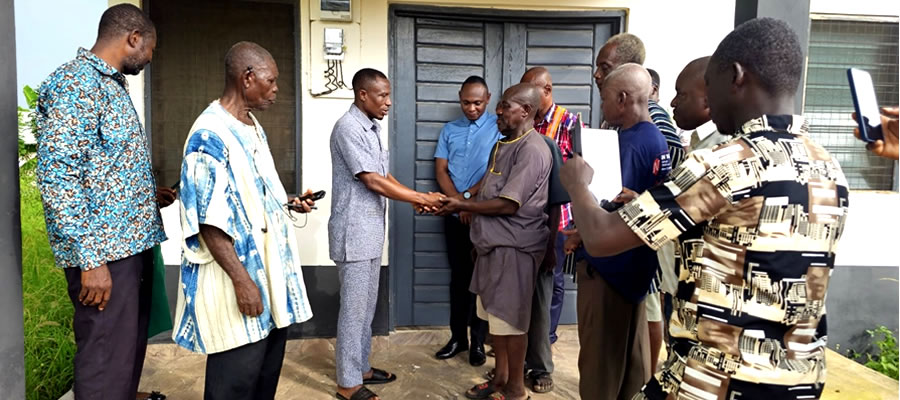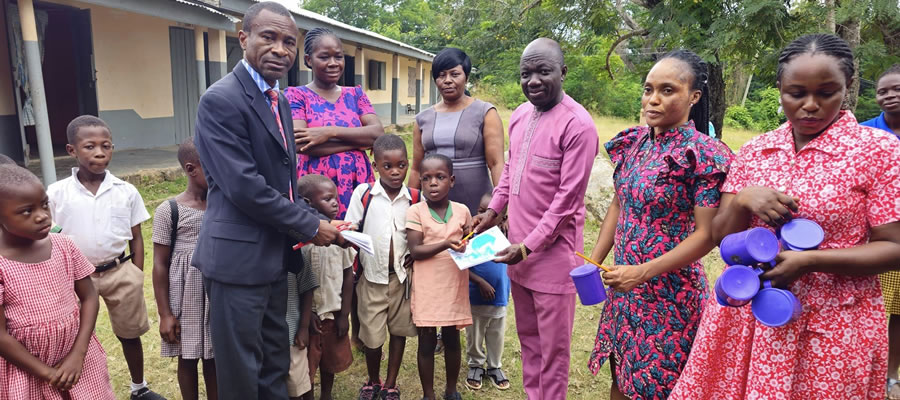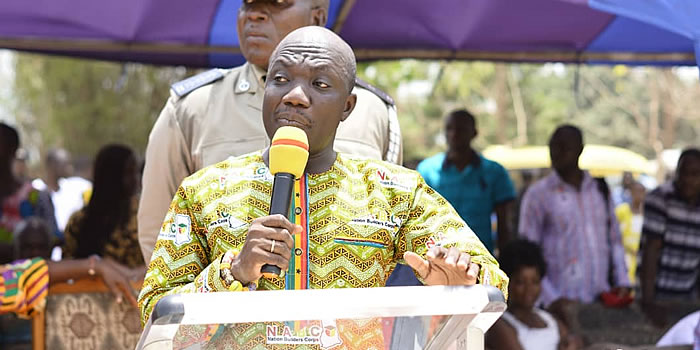

Poverty, Inequality and Social Protection:
The poor is defined as people who know what they want but cannot have them for lack of either access, or denial of access or lack of economic means because of sex, age, tribe, occupation, income level or social group. Some of their needs may be education, health, employment or representation in public life.
Poverty does not only relate to economic factors such as insufficient income, lack of assets and lack of access to decent jobs. Poverty also relates to social, political and cultural factors such as discrimination based on gender, ethnicity, caste, age or disability; lack of access to education and training; poor health; lack of representation; lack of empowerment; and vulnerability to shocks and crises
In North Dayi District, poverty manifests itself in quality of food and clothes dilapidated structures, poor sanitation, occasional outbreak of diseases.
Policies and programs geared towards the pro-poor would continuously be rolled out in various forms to help reduce poverty within the plan period. Some of these policies and programs are:
- Financial Assistance to the Needy and Poor in society
- Financial Assistance to People with Disability
- Livelihood Empowerment Against Poverty (LEAP)
- Ghana School Feeding Program (GSFP)
PERSONS WITH DISABILITY
Persons with Disability (PWDs) is defined as those who were unable to or were restricted in the performance of specific tasks / activities due to loss of function of some part of the body as a result of impairment or malformation.
Persons with disabilities face a wide range of life challenges for the reason that disability in whatever form or type reduces an individual’s ability to function to his/her full potentials.
Generally, persons with disability are marginalized and suffer from discrimination on account of their disability status. They are mostly regarded as less productive and not capable of contributing to development compared to their non-disabled counterparts. Accordingly, they are often seen as the burden on society in general and their families in particular.
Their unfortunate circumstances are often viewed as a curse or punishment. Furthermore, according to the summary World Report on Disability (World Health Organization 2011), persons with disability have poorer health status, lower education achievement, less economic participation and higher proportion of poverty than people without disabilities.
The 2010 population and housing census (PHC) indicates that out of a total of 2,402 people in the District, representing 6.0% of the population.
HIV/AIDS SERVICES
Prevention of Mother to Child Transmission is a very important indicator in the life of both pregnant women and their unborn babies. GHS helped to provide HIV testing and counseling to pregnant women and giving antiretroviral (ARV) drugs to mothers living with HIV and their infants throughout the maternal period-during antenatal care, labour and delivery, postpartum care and breastfeeding. This also includes community outreach and efforts to support partner involvement and testing.
Community Needs and Aspirations
North Dayi District Assembly as part of its core mandate is to ensure that, development is brought to the door step of its citizenry. In this vein, it is imperative for the Assembly to involve locals in its planning, monitoring, implementation and execution of programmes, policies and projects. To ensure participation by locals/community in plan preparation, the Assembly carried out needs assessment exercise by data collection in all six area councils within the District. Various unions/stakeholders such as PWD’s, FBO’s, CSO’s, driver unions, were engaged. This is to ensure ownership of the plan and reflects issues on the ground. Public hearing was further carried out in all six area councils to validate the needs, seek for opinions as input into the plan. Table 4.9 presents summary of needs and aspiration of the people.
Source: DPCU, 2017
HARMONISATION OF COMMUNITY NEEDS AND ASPIRATIONS WITH IDENTIFIED KEY DEVELOPMENT GAPS/PROBLEMS/ISSUES
Community needs and aspirations identified above were harmonized with summary of key development issues arising from the performance review and profile of the District. The needs of each community were matched against the summarized needs and aspirations to indicate the level of harmony between them. The scoring was determined in table 5.2 as follows;
Harmonization of key development issues under GSGDA II with implications for 2018- 2021
Table 5.4 provides details of harmonized key development issues from the performance review and profiling and situational analysis with implications of those of the NMTDPF (2018-2021)
Harmonization of key development issues under GSGDA II with implications for 2018-2021 with those of the NMTDPF.
This indicates various key development issues under GSGDA II, NMTDPF, development dimensions, and issues for DMTDP 2018-2021 to ensure harmony.
Table 5.5 below provides an in depth explanation.
Date Created : 4/5/2023 12:00:00 AM












 facebook
facebook
 twitter
twitter
 Youtube
Youtube
 +233 593 831 280
+233 593 831 280 0800 430 430
0800 430 430 GPS: GE-231-4383
GPS: GE-231-4383 info@ghanadistricts.com
info@ghanadistricts.com Box GP1044, Accra, Ghana
Box GP1044, Accra, Ghana